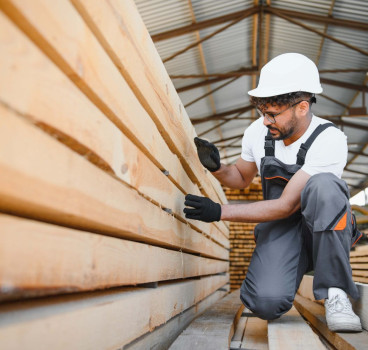The growing challenge of substance abuse in construction
The construction industry continues to face the challenge of substance abuse. We have been talking about it since 2016 when the Considerate Constructors Scheme first highlighted the problem in a UK survey, stating that some 35% of workers had noticed colleagues under the influence of drugs or alcohol. More recently the Substance Abuse and Mental Health Services Administration (SAMHSA) in the USA were telling us that that substance abuse is more prevalent in the construction industry than in other sectors. All the experts continue to tell us that this is a growing problem – so what are we going to do about it – writes John Ridgeway?
Substance abuse among construction workers has now become a pressing issue, with serious consequences for individuals, families and businesses. The most commonly used drugs include alcohol and prescription painkillers, such as oxycodone and hydrocodone. Stimulants like cocaine and methamphetamine can also be a problem in the construction industry. Marijuana is another substance that is commonly used by construction workers.
Here are some of the shocking answers given to the CCS all those years ago and things have not improved –
- 35% have noticed their colleagues under the influence of drugs and alcohol
- 25% agreed drugs or alcohol affected them at work through tiredness
- 23% agreed it affected them through decreased attention during work
- 19% agreed the affects made them less productive at work
The US study from 2022 found that 70.3 million people aged 12 or older (or 24.9%) used illicit drugs in the past year. Marijuana was the most used illicit drug, with 22.0% of people aged 12 or older (or 61.9 million people) using it in the past year – with a disproportionate number from the construction industry.
More importantly they found that one in 20 adults aged 18 or older had serious thoughts of suicide in the past year (13.2 million or 5.2%). Around 1.5% (or 3.8 million people) had made a suicide plan and 0.6% (or 1.6 million people) had attempted suicide in the past year. Worryingly for our industry, we know that many construction workers commit or contemplate suicide.
So why is construction such a magnet for substance abuse? Some experts would argue that this can be attributed to several factors, most particularly a stressful work environment. Construction workers often face physically demanding jobs, long hours and unpredictable schedules. These factors can contribute to stress and anxiety, which may lead to substance abuse.
We also know that construction sites can be places where substances are readily available, making it easier for workers to access and use drugs or alcohol. There may also be social pressure within the construction industry to use substances, particularly among younger workers.
Why the construction industry is particularly vulnerable
Other factors also play their part. Construction workers often work in remote locations, which can make it difficult to access support services and treatment programmes. There may also be a culture of risk-taking within the construction industry, which can contribute to substance abuse. Furthermore, workers may not have access to affordable healthcare, making it difficult to seek help for substance abuse problems.
Whatever the reason, drug taking in the construction industry has a significant economic impact. While specific figures can vary by region and time period, studies have consistently shown that substance abuse costs construction companies big money.
The Construction Industry Rehabilitation Programme (CIRP) in Canada has estimated that substance use and related mental health issues cost the construction industry $847 million annually in lost time. This figure alone highlights the significant economic impact of substance abuse for our industry.
As already mentioned, it's important to note that these costs are difficult to quantify precisely, as they can vary depending on factors such as the prevalence of substance abuse in a particular region, the types of substances being used and the effectiveness of prevention and treatment programmes. However, the available data clearly shows that substance abuse has a significant economic impact on the construction industry.
Where does the money go
As a result of substance abuse, companies are often required to cover the costs of health problems, which can be expensive to treat, both for individuals and for employers. It can lead to absenteeism, decreased productivity and poor job performance. This can result in lost revenue for construction companies.
Most importantly, we know that drugs can impair judgment, coordination and reaction time, increasing the risk of accidents on the job site. Accidents can lead to lost time, increased costs, and even fatalities. Substance abuse can also lead to legal problems, such as arrests and convictions. This can result in increased legal costs for both individuals and companies.
If we are to address the problem of substance abuse, it will be essential to implement effective prevention and treatment strategies. This includes providing more education and awareness programmes, drug testing, employee assistance courses and access to treatment. We also need to Implement more drug testing programmes to deter workers from using substances and identify those who may need help.
Like it or not, employers have a responsibility to create a safe and healthy workplace for their staff. This includes taking steps to prevent substance abuse and provide support for workers who are struggling with addiction. This includes introducing policies and procedures to address substance abuse, such as drug testing as well as providing training for supervisors on how to identify and address the signs that something is wrong.
Addressing the problem of substance abuse in the construction industry also requires a collaborative effort. Governments, employers, unions and healthcare providers must work together to implement effective prevention and treatment strategies.
We have a serious problem in the construction industry. However, by implementing effective prevention and treatment strategies, we can address this challenge and create a healthier and safer workplace for all. By working together, we can build a future where substance abuse is no longer a barrier to success in the construction industry = we can only hope.
Additional Blogs

What if Building Control went fully digital?
Building control governs structural integrity, fire protection, energy efficiency, accessibility and countless other aspects of design and construction. Historically, this process has been highly...
Read moreWhere most “Smart Buildings” go wrong
Smart buildings are often presented as the ultimate in modern construction - interconnected, efficient, intuitive and driven by real-time data. They promise lower operating costs, reduced energy use,...
Read more

The future of facilities management starts at RIBA Stage 0
Facilities management has traditionally been treated as a discipline that only becomes relevant once a building is handed over. At that point, FM professionals inherit decisions made months or years...
Read more